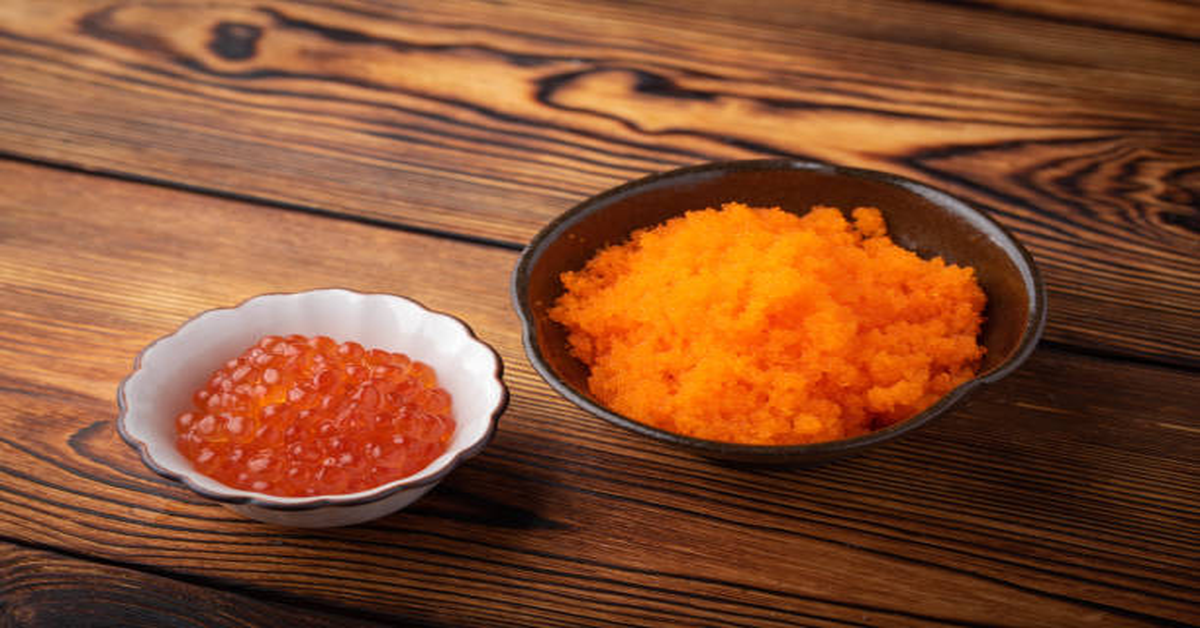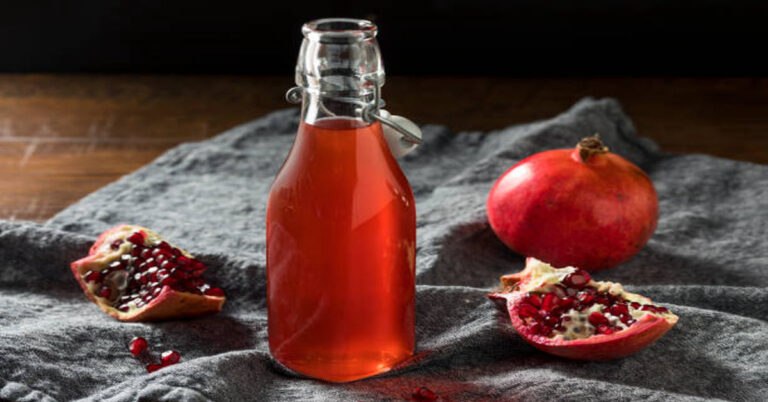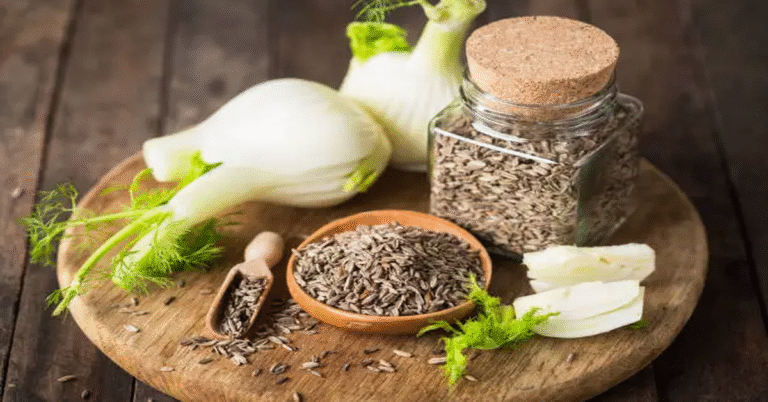
In the colorful world of Japanese cuisine, few ingredients capture both visual beauty and exquisite taste like tobiko, the tiny, glistening eggs of the flying fish. Often served atop sushi rolls, tobiko’s bright colors, subtle crunch, and delicate oceanic flavor make it a favorite among chefs and food enthusiasts alike. While many people know it as a garnish on sushi, tobiko is far more than decoration—it is a carefully prepared ingredient steeped in tradition, rich in nutrients, and highly valued for its versatility.
In this comprehensive 3000-word guide, we will explore every facet of tobiko—from its origin and harvesting process to its culinary uses, nutrition profile, flavor variations, and cultural importance. We’ll also discuss how it compares to other types of roe, the methods used to color and preserve it, and how it’s enjoyed around the world today.
1. Understanding Tobiko: What It Really Is
Tobiko (とびこ) is the Japanese term for flying fish roe. It refers specifically to the tiny eggs harvested from species of flying fish belonging to the family Exocoetidae. These eggs are known for their firm texture, bright color (usually orange-red), and subtle briny taste that adds depth to sushi and sashimi dishes.
Unlike larger fish eggs such as salmon roe (ikura) or sturgeon caviar, tobiko is much smaller—each egg measures around 0.5 to 0.8 millimeters in diameter. Despite its size, tobiko bursts with flavor and provides a satisfying, gentle crunch when eaten.
The name tobiko comes from two Japanese words: tobi (to fly) and ko (child or eggs). This poetic name literally means “flying child,” representing the flying fish’s unique ability to leap and glide above the ocean surface.
2. The Source: Flying Fish and Their Habitat
Flying fish are remarkable creatures found in tropical and subtropical oceans around the world. Their ability to glide above water allows them to escape predators, making them one of nature’s most fascinating marine species.
2.1 Common Flying Fish Species Used for Tobiko
Although there are over 60 species of flying fish, only a few are commonly used for tobiko production. These include:
| Species Name | Common Region | Notable Feature |
|---|---|---|
| Cypselurus agoo | Japan, Taiwan | High-quality roe, bright color |
| Hirundichthys affinis | Pacific Ocean | Small but flavorful eggs |
| Cheilopogon cyanopterus | Southeast Asia | Used in bulk tobiko production |
2.2 Harvesting Locations
Japan remains the world’s leading producer and consumer of tobiko. However, due to increasing demand, large-scale harvesting also occurs in Taiwan, Indonesia, the Philippines, and parts of Central America. The eggs are collected during the spawning season when flying fish lay their eggs on floating seaweed or debris near the ocean surface.
3. The Process of Making Tobiko
3.1 Collection of Roe
During spawning season, fishermen use floating mats or nets to attract flying fish. The eggs adhere to these materials and can be collected without harming the adult fish. After collection, the roe is washed, filtered, and separated from any impurities.
3.2 Cleaning and Preservation
Once collected, the eggs are gently rinsed in cold, lightly salted water to remove debris and sand. Tobiko is then cured in a brine mixture containing salt and sometimes natural preservatives. This curing process not only enhances the flavor but also extends the shelf life while maintaining the signature crunch.
3.3 Flavoring and Coloring
One of the most fascinating aspects of tobiko is its colorful presentation. The natural color of tobiko is bright orange-red, but it can be infused with various natural ingredients to produce different colors and subtle flavor variations.
| Color | Added Ingredient | Flavor Note | Common Use |
|---|---|---|---|
| Orange (Natural) | None | Pure ocean flavor | Sushi, sashimi |
| Black | Squid ink | Slightly earthy, briny | Fancy sushi rolls |
| Green | Wasabi | Spicy and tangy | Modern fusion dishes |
| Red | Beet or chili extract | Sweet-spicy tone | Decorative plating |
| Yellow | Yuzu (citrus) | Light and zesty | Summer dishes |
Chefs use these different varieties not only to enhance flavor but also to create visually appealing dishes that engage all senses.
4. Tobiko vs. Other Types of Roe
In Japanese cuisine, several types of fish eggs are used, each offering unique textures, colors, and flavors. Tobiko often gets compared with masago (capelin roe) and ikura (salmon roe).
| Type of Roe | Fish Source | Size | Flavor Profile | Texture | Common Use |
|---|---|---|---|---|---|
| Tobiko | Flying fish | 0.5–0.8 mm | Mild, salty, slightly sweet | Crunchy | Sushi rolls, garnish |
| Masago | Capelin | 0.3–0.5 mm | Milder and less crunchy | Soft | California rolls, sauces |
| Ikura | Salmon | 4–6 mm | Rich, bold, oily | Popping texture | Nigiri sushi, rice bowls |
| Caviar | Sturgeon | 2–4 mm | Creamy, buttery, luxurious | Soft | Gourmet dishes, appetizers |
From this comparison, it’s clear that tobiko strikes a balance between the delicate flavor of masago and the rich burst of ikura. Its vibrant color and texture make it ideal for creative sushi and fusion dishes.
5. Culinary Uses of Tobiko
5.1 Sushi and Sashimi
Tobiko is perhaps best known for its use in sushi. It is often placed atop rolls such as the California Roll, Rainbow Roll, or Dragon Roll, adding a burst of color and texture. Sometimes, tobiko is used as a filling mixed with mayonnaise, spicy sauce, or crab meat to enhance the umami flavor.
5.2 Tobiko Nigiri
In this presentation, a small mound of sushi rice is wrapped with seaweed (nori) and topped with a generous spoonful of tobiko. The vivid color and subtle brine make it one of the most visually striking pieces on a sushi platter.
5.3 Tobiko Sauces and Dressings
Modern Japanese and fusion restaurants use tobiko in sauces for pasta, salads, and grilled seafood. Tobiko mayonnaise, for instance, combines creamy richness with the delicate crunch of roe—excellent for seafood dips or tempura.
5.4 Fusion and Global Dishes
In Western fusion cuisine, tobiko finds new life as an ingredient in gourmet dishes like:
- Tobiko-topped deviled eggs
- Tobiko pasta with cream and herbs
- Tobiko on avocado toast
- Tobiko sushi tacos
5.5 Cooking Note
Tobiko should never be cooked directly under high heat because heat causes the eggs to burst and lose their texture. It’s best added as a finishing touch after cooking or as a garnish.
6. Nutritional Value of Tobiko
Despite its tiny size, tobiko is packed with nutrients. It provides protein, omega-3 fatty acids, and essential vitamins while being low in calories.
| Nutrient (per 1 oz / 28g) | Amount | Benefit |
|---|---|---|
| Calories | ~70 kcal | Low-calorie energy source |
| Protein | 6–7 g | Builds muscles and tissues |
| Fat | 4 g | Contains healthy omega-3s |
| Cholesterol | 40–50 mg | Moderate intake recommended |
| Omega-3 Fatty Acids | ~500 mg | Supports heart and brain health |
| Vitamin B12 | 3.5 µg | Boosts red blood cell formation |
| Selenium | 20 µg | Acts as an antioxidant |
| Sodium | 300–400 mg | Flavoring agent (watch intake) |
6.1 Health Benefits
- Rich in Omega-3 Fatty Acids – Helps lower inflammation, improve heart health, and support brain function.
- High in Protein – Supports muscle repair and healthy metabolism.
- Good Source of Micronutrients – Especially vitamin B12 and selenium, important for nerve and immune health.
- Low Calorie – Ideal for light, nutrient-dense diets.
6.2 Precautions
While tobiko is nutritious, moderation is key. Its sodium content can be high due to curing, so those watching blood pressure should consume it sparingly. Pregnant women should ensure tobiko is from a reputable, pasteurized source to minimize risks of foodborne illness.
7. Tobiko in Japanese Culture
7.1 Symbolism
In Japan, tobiko symbolizes prosperity and joy because of its abundance and vibrant color. It often appears in celebratory dishes or during festivals where sushi is served.
7.2 Traditional Preparation Methods
Before modern preservation, tobiko was salted and stored in wooden containers. The natural brine helped maintain freshness without refrigeration. Today, refrigeration and vacuum-sealing ensure consistent quality year-round.
7.3 Regional Variations
Different coastal areas of Japan flavor tobiko with local ingredients such as yuzu peel, soy sauce, or shiso leaves. These subtle regional differences highlight Japan’s deep culinary respect for natural flavor balance.
8. Tobiko Around the World
8.1 In Western Cuisine
Western chefs often use tobiko for its color and textural appeal rather than traditional flavor pairings. It has become popular in modern dishes like seafood sliders, poke bowls, and gourmet appetizers.
8.2 In Korean Cuisine
Korean cuisine has adopted tobiko under the name “al” (meaning “roe”). It’s commonly used in al-bap, a rice bowl topped with various fish roes, vegetables, and sesame oil.
8.3 In Southeast Asia
In countries like Singapore and Thailand, tobiko appears in sushi restaurants, fusion rolls, and salads. The combination of wasabi tobiko and spicy sauces reflects local flavor preferences.
9. Types and Grades of Tobiko
Not all tobiko is the same. Grading and quality vary based on freshness, size, and curing method.
| Grade | Quality Description | Common Use |
|---|---|---|
| Premium Grade | Fresh, uniform color and texture, minimal additives | Fine dining and sushi bars |
| Standard Grade | Slightly softer or mixed color, still flavorful | Casual restaurants |
| Processed Grade | Often dyed or mixed with flavoring | Packaged sushi and ready-to-eat products |
Chefs often select the grade based on presentation needs and cost. For high-end sushi, premium-grade natural tobiko is preferred for its clean flavor and crisp texture.
10. Storage, Handling, and Safety
10.1 Storage Guidelines
| Condition | Method | Shelf Life |
|---|---|---|
| Fresh (Refrigerated) | 0–4°C (32–39°F) | 1–2 weeks |
| Frozen | -18°C (0°F) | Up to 6 months |
| Opened Package | Airtight container, consume quickly | 3–5 days |
Always store tobiko in airtight packaging to prevent oxidation and maintain its crunchy texture.
10.2 Safety Tips
- Avoid leaving tobiko at room temperature for more than 2 hours.
- Do not refreeze once thawed; it alters texture and taste.
- Purchase from reputable sources to ensure it’s pasteurized and safe for raw consumption.
11. Tobiko in Culinary Presentation
A well-prepared sushi platter uses tobiko as a visual highlight. The contrast between tobiko’s vibrant hue and the white rice or dark seaweed creates aesthetic balance.
Plating Tips:
- Use small portions to enhance, not overpower, the dish.
- Mix colored tobiko for decorative appeal.
- Pair with mild-flavored seafood to let tobiko’s subtlety shine.
- Combine with avocado or cucumber for refreshing balance.
12. Environmental and Ethical Considerations
Sustainable sourcing of tobiko is essential. Fortunately, flying fish are not overfished, and their roe harvesting has minimal ecological impact when done responsibly.
However, as global demand increases, ethical practices such as avoiding overharvesting during spawning season and supporting regulated fisheries ensure long-term sustainability. Consumers can check for sustainability certifications or choose suppliers committed to responsible sourcing.
13. Tobiko in Modern Gastronomy
Contemporary chefs worldwide have embraced tobiko as a versatile ingredient beyond Japanese cuisine. Molecular gastronomy uses tobiko-like spheres for visual imitation in dishes like faux-caviar desserts or plant-based sushi. Chefs also experiment by combining tobiko with truffle oil, citrus zest, or edible gold for luxurious appeal.
In modern tasting menus, tobiko often serves as a bridge between traditional Asian flavors and Western culinary innovation.
14. How to Make Tobiko Dishes at Home
14.1 Tobiko Sushi Rice Bowl (Simplified Recipe)
Ingredients:
- 1 cup cooked sushi rice
- 2 tbsp tobiko (color of choice)
- 1 tsp rice vinegar
- ½ avocado, sliced
- 2 slices cucumber
- Soy sauce for dipping
Method:
- Mix rice vinegar into warm rice.
- Top with avocado and cucumber slices.
- Add a spoonful of tobiko on top.
- Serve with soy sauce and enjoy immediately.
14.2 Tobiko Pasta
Ingredients:
- 150g pasta (spaghetti or linguine)
- 1 tbsp butter
- 2 cloves garlic (minced)
- 1 tbsp cream or milk
- 1 tbsp tobiko
- Salt and pepper to taste
Method:
- Cook pasta al dente and set aside.
- In a pan, melt butter, sauté garlic, add cream.
- Toss in pasta and finish with tobiko.
- Garnish with herbs and serve warm.
Conclusion
Tobiko represents the artistry of Japanese cuisine—a harmony of flavor, color, and texture encapsulated in each tiny pearl. From the clean ocean waters where flying fish lay their eggs to the delicate hands of sushi chefs who turn them into culinary jewels, tobiko’s journey is a testament to balance, craftsmanship, and respect for nature.
Whether enjoyed atop sushi, stirred into pasta, or used in creative global dishes, tobiko continues to captivate food lovers around the world. Its nutritional richness, versatility, and stunning visual appeal ensure it remains a timeless ingredient bridging traditional and modern gastronomy.
FAQs
1. What is tobiko made from?
Tobiko is made from the roe (eggs) of flying fish. These eggs are cured and sometimes flavored or colored for culinary use.
2. Is tobiko raw or cooked?
Tobiko is cured, not cooked. It’s safe to eat raw when sourced and stored properly. The curing process preserves it.
3. How is tobiko different from masago?
Tobiko eggs are slightly larger, crunchier, and have a more vibrant flavor compared to the softer and smaller masago (capelin roe).
4. Can I freeze tobiko?
Yes, tobiko can be frozen for several months without losing much texture. Always thaw slowly in the refrigerator before serving.
5. Is tobiko healthy?
Yes. Tobiko is rich in protein, omega-3 fatty acids, and vitamin B12 while being relatively low in calories.







